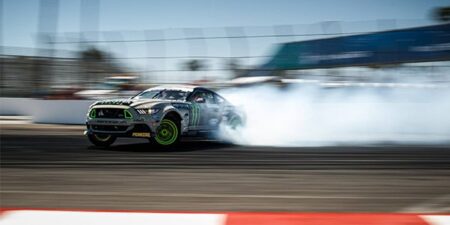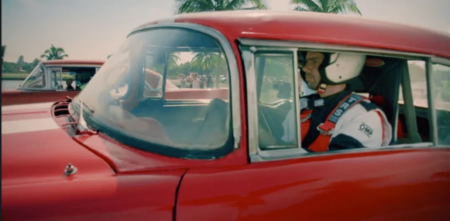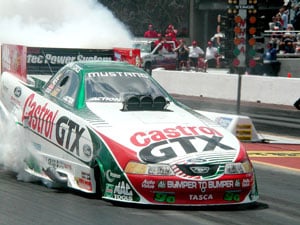
Motor Sport's top images of 2017: part 1
Motor Sport staff photographer Lyndon McNeil picks a gallery of his own top 15 images of 2017 Motor Sport's top images of 2017: part 2 Related: Gallery: JPS BMW 635
“Whatever you do,” Bobby Rahal warned me, “do not immediately try to play the big hero, by which I mean don’t go and stand right behind the cars when they go off the line – if you do, you’ll find it a deeply unpleasant experience! You’ve got to build up to it, stand way behind them at first, then gradually get nearer, so that it gets less of a shock. In fact,” Bobby said, “probably the best way to start off is at the end of the run, not the beginning…”
So that was what I did – and Rahal was right. This was my first visit to an NHRA drag meeting, at Chicago’s Route 66, and a friend and I stationed ourselves just beyond the finish line – which, of course, was only a quarter of a mile from the start…
We watched the Pro Stock cars, and they seemed pretty impressive to me, reaching more than 200mph in under seven seconds – but then, in the distance, an engine was fired up, and very obviously this was something else again. The Funny Cars were about to do their thing.
When you’ve been around motor racing for as long as I have, new experiences are quite hard to find – and new experiences that shake you to your boots are rarer than that. During practice for the British Grand Prix I watched from Copse, and then Becketts, and was as ever amazed by the sheer capability of the Grand Prix car. At Monaco I spent part of a session in the tunnel, and that’ll blow the cobwebs away for you, believe me.
Insofar as you can ever get used to such experiences, though, I can say that – to some extent, anyway – I have, in the sense that, for all their immediate impact, I have seen them many times before, and never has the Monaco tunnel made such an impression on me as the first time, back in 1971. The sweet scream of Chris Amon’s Matra V12, amplified for being trapped in by masonry, is something I remember to this day.
A few years ago, while in Indianapolis for the US Grand Prix, I drove 40 or 50 miles out of town to Kokomo, where there is a dirt oval, and where that evening there was a World of Outlaws sprint car show.
I have always adored sprint car racing: to me it is the earthiest, most visceral form of motor racing anywhere, and if my purist instincts lean me towards wing-less cars, such as Andretti and Foyt and Parnelli used to drive, still I wanted to see an Outlaws show. I was stunned. There was nothing remotely subtle about it, but can you imagine a field of bellowing Chevy V8s, scrabbling to put 900 horsepower to the ground on a quarter-mile dirt oval? For a few minutes, until my senses adjusted, I was befuddled by the sheer velocity of what was in front of me.
Even that, though, fell short of Route 66 when John Force blasted over the line in front of me: never before had I seen a car moving at more than 300mph – and, what’s more, doing it less than five seconds after being at a standstill. That’s what close to 8000 – eight thousand – horsepower can do. Later I interviewed Force in his motorhome, and smile now at the memory of how different this was from the racing world I knew – not least when, called by his crew to make another run, he went to the fridge, and dug a large spoon into a jar of peanut butter: “Instant energy hit,” he said. It was a long way from cranky food and personal trainers.
And later, in the evening, I indeed did what Rahal had suggested: edged nearer and nearer to the cars, as they got on their way, flames belching, and vanished into the dark. Ear plugs in, ear defenders over them, then hands over the top – and still it bordered on pain when they took off. For sheer violence, nothing else in motor sport comes close, and I understood that night why so many are addicted to the NHRA. Extreme is the only word for it.
It is also the only word to describe Sébastien Loeb’s ascent of Pikes Peak on June 30. A visit to the celebrated Colorado hillclimb has long been on my ‘to do’ list, and in recent days I have so wished I’d made it this year, when Loeb sliced a minute and a half from the existing record. Peugeot’s movie of his run is on YouTube, and already I’ve watched it countless times.
For one thing, the event is such a throwback, reminiscent of the Targa Florio in the way spectators are allowed to stand at the roadside; for another, Pikes Peak stands as a wonderfully mad monument to a time before political correctness began to seep insidiously into the world. If ‘health and safety’ crossed Loeb’s mind before he started the climb, they were dispelled once he got on his way, and what you watch – for 8 minutes and 13.878 seconds – is not only a master craftsman at his work, but also an extraordinarily brave man.
The majority of Pikes Peak is devoid of guardrail, and, as former winner Mario Andretti puts it, “There’s a lot places at the Peak where if you go off… it’s going to be a long time before you feel anything…” Watch the movie, and you’ll find yourself occasionally flinching.
Loeb’s four-wheel-drive Peugeot 208 T16 weighs 875 kilos – and has 875bhp. “The car,” he said, “is the best of several worlds. It has the downforce of a Le Mans car, faster acceleration than an F1 car – and it’s like going through rally scenery…”
Well, yes – but at an unimaginable speed. Pikes Peak is a 12.42-mile climb, remember, with 156 corners, many of them hairpins, yet the Peugeot averaged more than 87mph, and in places got to more than 160.
If you haven’t seen the film yet, I suggest you do so with all haste. There are those who suggest that Sébastian Loeb is the best all-round driver in the world, and I’m not about to argue with them.

Motor Sport staff photographer Lyndon McNeil picks a gallery of his own top 15 images of 2017 Motor Sport's top images of 2017: part 2 Related: Gallery: JPS BMW 635

Drifting is about to get serious – and caution may be needed in a very different sense The art of oversteer is very apparent in historic racing, but it’s something we…

TV car shows have a type: buy a shed and call it a barn find, find out it’s worse than it looked on the outside, fix it up, and do…

This is to salute John Force, who made what is surely this year’s greatest motor racing comeback. Force has been the king of NHRA Funny Car racing for 20 years…